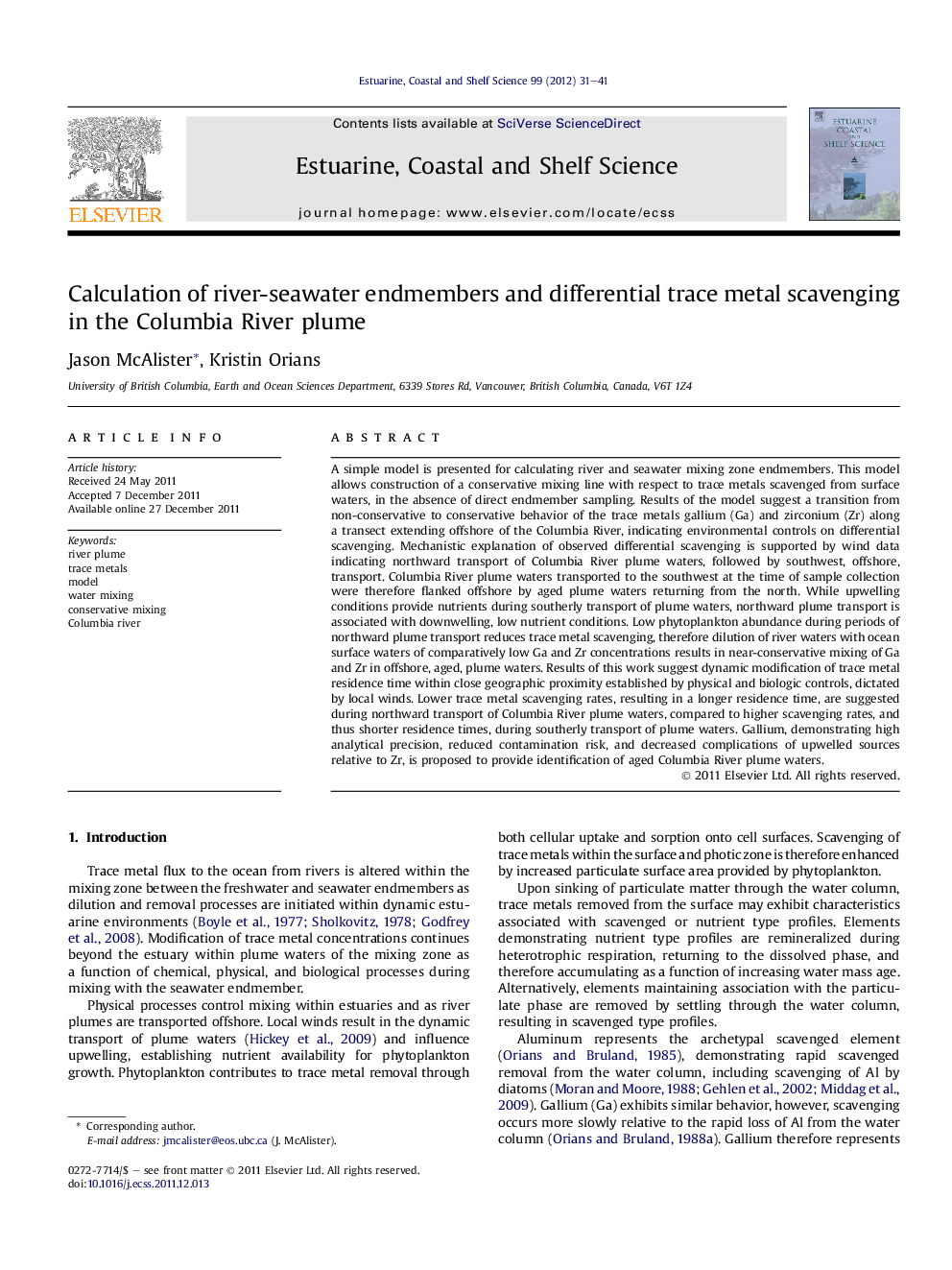| کد مقاله | کد نشریه | سال انتشار | مقاله انگلیسی | نسخه تمام متن |
|---|---|---|---|---|
| 4540370 | 1626694 | 2012 | 11 صفحه PDF | دانلود رایگان |

A simple model is presented for calculating river and seawater mixing zone endmembers. This model allows construction of a conservative mixing line with respect to trace metals scavenged from surface waters, in the absence of direct endmember sampling. Results of the model suggest a transition from non-conservative to conservative behavior of the trace metals gallium (Ga) and zirconium (Zr) along a transect extending offshore of the Columbia River, indicating environmental controls on differential scavenging. Mechanistic explanation of observed differential scavenging is supported by wind data indicating northward transport of Columbia River plume waters, followed by southwest, offshore, transport. Columbia River plume waters transported to the southwest at the time of sample collection were therefore flanked offshore by aged plume waters returning from the north. While upwelling conditions provide nutrients during southerly transport of plume waters, northward plume transport is associated with downwelling, low nutrient conditions. Low phytoplankton abundance during periods of northward plume transport reduces trace metal scavenging, therefore dilution of river waters with ocean surface waters of comparatively low Ga and Zr concentrations results in near-conservative mixing of Ga and Zr in offshore, aged, plume waters. Results of this work suggest dynamic modification of trace metal residence time within close geographic proximity established by physical and biologic controls, dictated by local winds. Lower trace metal scavenging rates, resulting in a longer residence time, are suggested during northward transport of Columbia River plume waters, compared to higher scavenging rates, and thus shorter residence times, during southerly transport of plume waters. Gallium, demonstrating high analytical precision, reduced contamination risk, and decreased complications of upwelled sources relative to Zr, is proposed to provide identification of aged Columbia River plume waters.
Journal: Estuarine, Coastal and Shelf Science - Volume 99, 1 March 2012, Pages 31–41